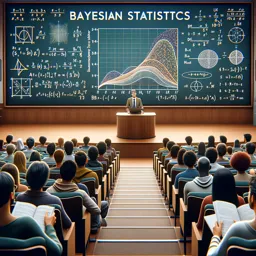Introduction
Statistics is a powerful tool used to collect, analyze, interpret, and present data. When used correctly, statistics can provide valuable insights and support informed decision-making. However, misinterpretations and misuses of statistical data are common, often leading to misleading conclusions. This article explores some of the most frequent misinterpretations and misuses of statistics and provides guidance on how to avoid them.
1. Confusing Correlation with Causation
One of the most common mistakes is assuming that a correlation between two variables implies that one causes the other. Correlation measures the strength and direction of a relationship between two variables, but it does not prove causation. For example, a correlation between ice cream sales and drowning incidents does not mean that buying ice cream causes drowning. Both variables are influenced by a third factor: hot weather.
2. Misleading Graphs and Charts
Visual representations of data, such as graphs and charts, can easily be manipulated to mislead. Common tactics include:
- Truncated Axes: Cutting off the y-axis to exaggerate differences.
- Inappropriate Scaling: Using logarithmic scales or inconsistent intervals to distort the data.
- Cherry-Picking Data: Highlighting specific data points that support a particular conclusion while ignoring others that do not.
3. Small Sample Sizes
Drawing conclusions from small sample sizes can lead to inaccurate and unreliable results. Small samples are more likely to produce extreme values and may not be representative of the population. It’s essential to ensure that the sample size is large enough to provide a reliable estimate of the population parameters.
4. Overlooking the Margin of Error
The margin of error indicates the range within which the true value of a population parameter lies, based on a sample statistic. Ignoring the margin of error can lead to overconfidence in the precision of the results. For example, if a survey states that 55% of people support a policy with a margin of error of ±5%, the true support could be anywhere between 50% and 60%.
5. P-Hacking and Data Dredging
P-hacking involves manipulating data or conducting multiple statistical tests until significant results are obtained. This practice increases the risk of Type I errors (false positives). Researchers should pre-register their studies, set clear hypotheses, and avoid conducting excessive tests to ensure the integrity of their findings.
6. Ignoring Confounding Variables
Confounding variables are extraneous variables that can affect the outcome of a study. Failing to account for these variables can lead to biased results. For example, a study on the effect of exercise on weight loss must control for diet, as it can also influence the outcome.
7. Misinterpretation of Statistical Significance
Statistical significance indicates that the observed effect is unlikely to be due to chance. However, it does not measure the size or importance of the effect. A statistically significant result with a small effect size may not be practically meaningful. It’s important to consider both statistical significance and effect size when interpreting results.
8. Overgeneralization
Generalizing results from a study to a broader population without considering the sample’s representativeness can lead to incorrect conclusions. For example, results from a study on college students may not be applicable to the general adult population. Ensuring that the sample is representative and acknowledging the study’s limitations are crucial for accurate generalization.
9. Selective Reporting
Selective reporting involves presenting only the results that support a desired conclusion while ignoring those that do not. This practice can create a biased view of the data. Comprehensive reporting of all results, including non-significant findings, is essential for transparency and accuracy.
10. Misuse of Averages
Averages can be misleading if the data distribution is skewed or contains outliers. For instance, the mean income in a population with a few extremely high earners can give a distorted view of the typical income. Using median or mode, along with measures of dispersion like range or standard deviation, can provide a more accurate picture.
Conclusion
Understanding and avoiding common misinterpretations and misuses of statistics is crucial for accurate data analysis and interpretation. By being aware of these pitfalls, students and researchers can ensure that their statistical analyses are robust, reliable, and truly reflective of the data. Proper use of statistics enhances the credibility of research findings and supports sound decision-making based on accurate information.

























